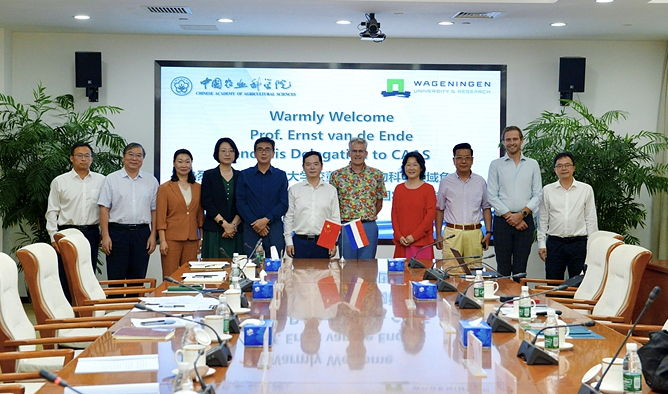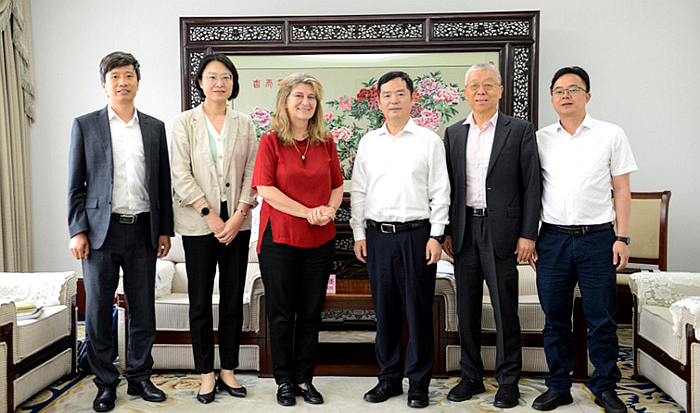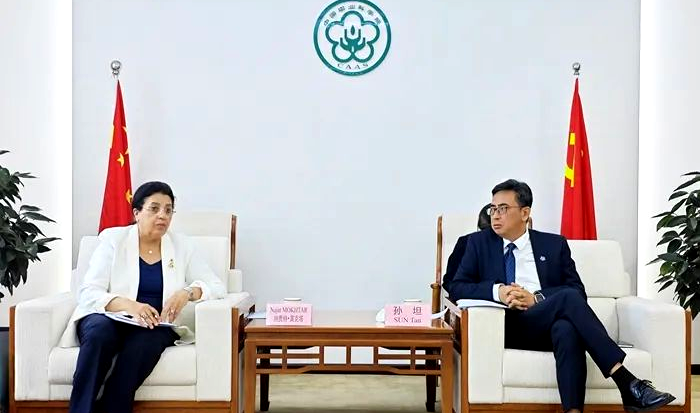[China Daily]Scientists discover that tomato is 'mother' of potato
BEIJING -- A surprising discovery by scientists has revealed that an ancient genetic marriage roughly 9 million years ago gave rise to what is now the world's third-largest staple crop: the potato. And the tomato, it turns out, is the mother of the potato.
The study was conducted by a research team from the Agricultural Genomics Institute in Shenzhen, the Chinese Academy of Agricultural Sciences and a domestic researcher from Lanzhou University, in collaboration with scientists from Canada and the UK. It showed that the potato originated from an ancient hybridization event between the tomato plant and a potato-like plant about 9 million years ago. This cross also led to the creation of a novel organ: the tuber.
Published in the latest issue of the Cell journal, these findings provide a groundbreaking theoretical perspective for the genetic breeding of potatoes.
As the world's most important tuber crop, the potato is native to South America. Valued for its high nutritional content and wide adaptability, it has spread worldwide.
Huang Sanwen, who led the study, explained that the potato's origin had long puzzled scientists. In appearance, modern potato plants are almost identical to a potato-like species called Etuberosum, which does not carry tubers. However, potato plants are more closely related to tomatoes based on phylogenetic analysis.
To unravel the mystery of the potato's origin, the research team analyzed 101 genomes and 349 resequenced samples from cultivated potatoes and their 56 wild relatives -- effectively a comprehensive DNA paternity test for all potatoes.
They found that all potatoes examined carried stable, balanced genetic contributions from both the Etuberosum and the tomato. From this, they inferred that the potato was the hybrid offspring of the two.
To validate this hypothesis, the team further assessed the divergence times of the three species. Their results showed that the Etuberosum and the tomato began diverging around 14 million years ago. Approximately 5 million years after their divergence, the two hybridized, leading to the emergence of the earliest tuber-bearing potato plants around 9 million years ago.
"The tomato served as the maternal parent of the potato, while the Etuberosum was the paternal parent," Huang said.
However, what continued to puzzle the researchers was why only the potato develops tubers, while its parents lack them. The tomato has neither underground stems nor tubers, and the Etuberosum has underground stems but no swollen tubers.
Huang's team proposed a bold explanation: The tuber could be the product of genomic rearrangement. After the two ancestral lineages crossed, their genes recombined in a way that accidentally created the tuber as a new organ.
The team further traced the origin of the key tuber formation genes, which are a combination of genetic material from each parent. They found the SP6A gene, which acts like a master switch that tells the plant when to start making tubers, came from the tomato side of the family. Another important gene, IT1, which helps control the growth of the underground stems that form tubers, came from the Etuberosum side. Without either piece, the hybrid offspring would be incapable of producing tubers.
This ancient marriage not only produced the tuber but also enriched the genetic diversity of the potato plant's lineage.
The team also discovered that different potato individuals exhibit a "mosaic" pattern of parental genetic contributions.
When subjected to varying environmental stresses, this mosaic genetic combination allows for the selection of optimal gene sets, enabling potatoes to adapt to diverse habitats ranging from temperate grasslands to alpine meadows.
The tuber has an underground survival advantage. It stores water and starch, helping potatoes endure drought and cold, and allows reproduction without seeds or pollination, as new plants can sprout directly from the buds on tubers.
"Evolving a tuber gave potatoes a huge advantage in harsh environments, fueling an explosion of new species and contributing to the rich diversity in the potatoes we see and rely on today," Huang said.
-
 Jul 09, 2025CAAS President meets with WUR Executive Board Member
Jul 09, 2025CAAS President meets with WUR Executive Board Member -
 Jul 09, 2025CAAS President Meets with AAS President
Jul 09, 2025CAAS President Meets with AAS President -
 Jul 09, 2025Secretary of the Leadership Party Group of CAAS Meets with Secretary of the Brazilian Ministry of Agriculture and Livestock
Jul 09, 2025Secretary of the Leadership Party Group of CAAS Meets with Secretary of the Brazilian Ministry of Agriculture and Livestock -
 Jul 09, 2025CAAS Deepens Scientific Cooperation with IAEA
Jul 09, 2025CAAS Deepens Scientific Cooperation with IAEA -
Jul 09, 2025CAAS Deepens Agricultural Science and Technology Cooperation with Eastern European Countries
